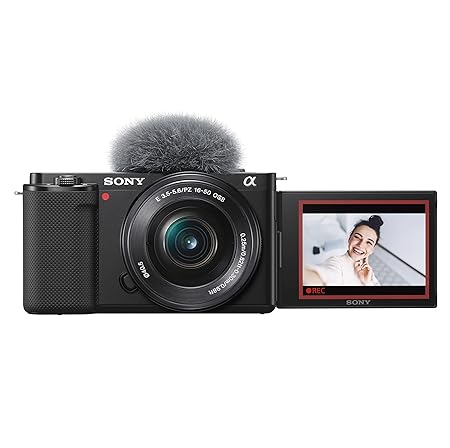Social media advertising has become an essential tool for modern social media marketing. With the rise of social platforms like Instagram and TikTok, social media users now expect to encounter paid ads as they browse through their favourite apps.
As brands look for their fair share of attention in the crowded online world, social media campaigns or digital advertising have become an integrated part of their digital marketing strategies.
Imagine shoppers scrolling through their social feeds, seeking product recommendations and inspiration. Among the most sought-after content are posts featuring products in real-life scenarios. This consumer behaviour emphasizes the power of social media advertising in driving product discovery and purchase intent.
Social media advertisements have evolved rapidly, giving brands infinite opportunities beyond generic or one-fit-for-all solutions.
With personalized targeting, creative ad formats, and a focus on delivering value, brands can create social ad campaigns that seamlessly blend into users’ social media experience.
What is social media advertising?
Social media advertising is a potent tool that allows brands to advertise their products or services through paid advertisements on various social media platforms.
Utilizing this approach, you can reach more of your audience, connect with potential customers, and encourage them to check out your offerings.
One of the significant advantages of employing paid advertising on social media is the ability to tap into a much larger audience beyond your current followers. The reach of your ads extends to users who may still need to be made aware of your brand, allowing you to make a lasting impression on new prospects.
Moreover, social media networks possess a wealth of user data, offering valuable targeting capabilities for your ads. You can select your audience based on demographics, age, gender, and language. You can also do micro-selection according to their preferences and behaviour.
This granular level of targeting ensures that your ads reach the right people – those most likely to be interested in your products or services.
Social media advertising platforms provide many options to create highly engaging ad campaigns. Through eye-catching visuals, compelling copy, or interactive elements, you can craft ads that resonate with your target audience and encourage them to take action.
Additionally, social media advertising offers various ad formats to suit your specific goals. From driving website traffic to promoting a new product or service, you can choose the format that aligns best with your campaign objectives. This flexibility allows you to experiment with different approaches and refine your strategy based on real-time performance data.
Regularly analyzing your social media advertising campaign is essential to get the most out of your social media efforts. Monitoring key metrics, such as click-through rates (CTR), conversion rates, and return on investment (ROI), will provide insights into the effectiveness of your ads and help you optimize future campaigns.
Why should one use social media advertising?
- Increase brand awareness- Want something seen? Social media is the best place for that. Posting and promoting content on your website to social media is a highly effective way to drive traffic and increase people’s awareness of your brand. With the ability to target people based on information that social media sites have on them, you’ll reach new and interested audiences quicker and easier than any other method.
- Increase Engagement-Social media is where people engage with others, including brands. You must interact with social media audiences to build lasting relationships that need quality engagement to grow. That means the ads you sponsor must be what your audience is interested in.
- You target more people interested in your business- Boosting your brand affinity is a step up after visibility and engagement. Targeting people interested in your business will build brand recognition in your audience. Your audience will create a link for your brand after seeing it multiple times and engaging with it, either through interacting on social media or making a purchase. When you have built a rapport with your audience, you build a potentially long-lasting relationship with them. With that relationship, they’ll likely become your regular customer, relying on and trusting your brand with their future wants and needs.
- Generate more leads- Each social media advertising is connected to a landing page on your website. Some social media platforms like Facebook allow you to place a landing page in the ad. Because your landing page includes a call to action (CTA) like “Buy Now” and often a form to fill (such as email or phone number), your landing page is how you generate and monitor leads.
- Increase Sales- Increased leads will naturally boost your sales the more you perform paid advertising on social media. The result of your social media advertising strategy is that the more often people interact with your ads, the more you’ll be at the top of their minds when they feel ready to purchase.
Best practices for social media advertising
With millions of users on various platforms daily, social media offers an unprecedented opportunity to showcase your brand and drive desired actions from potential customers. However, running successful social media ad campaigns requires careful planning and execution.
1: Determine Your Target Audience- Defining your target audience is crucial before diving into social media advertising. Understanding your potential customers’ demographics, interests, and preferences will help you craft compelling ad content that resonates with them. Ask yourself the following questions to identify your target audience:
Who is your ideal customer?
What are their age, gender, location, and occupation?
What are their pain points and desires?
2: Choose the Right Platforms- Social media platforms come in various shapes and sizes, and not all may suit your business. Conduct thorough research to determine which platforms align best with your target audience and business objectives.
Consider the following major social media platforms for advertising:
When embarking on a Facebook advertising campaign, the initial step is to define your ad objective. Facebook’s versatile social advertising provides a wide range of ad objectives tailored to assist you in achieving your specific online goals. They include:
Awareness Stage
Brand Awareness: These social ads are designed to increase people’s awareness of your business and brand. Facebook targets these ads to individuals who are more likely to remember and engage with the content, thereby establishing brand familiarity and capturing the interest of your target audience.
Reach: Facebook uses reach ads to show your content to as many members of your target audience as possible while staying within your specified budget. You control ad frequency, but it might reach users who overlook advertisements.
Consideration Stage
Traffic: This objective directs users from Facebook to a URL of your choice, such as your website’s homepage or a specific product page. It aims to increase the number of visitors to your destination, increasing the likelihood of desired actions on your landing page.
Engagement: Engagement ads are shown to users who are likely to interact with the content through likes, comments, reactions, or shares. The goal is to encourage users to engage with your ad, increasing its visibility and reach.
Conversion Stage
Video: Brands can use ads of up to 240 minutes to showcase their offerings. However, shorter video ads tend to perform better in engagement and effectiveness.
Images/Photo: Photo ads help drive engagement and can be a powerful tool to convey your brand message visually.
Page Likes: These ads aim to increase the number of likes on your Facebook page, helping build an online community around your brand.
Collection: Collection ads feature a primary image or video and four additional images arranged in a grid format. Users are taken to a product page upon clicking, enhancing the post-click experience.
Carousel: This ad type allows brands to showcase up to 10 images or videos in a single ad, each with its link, allowing advertisers to feature various products or messages.
Slideshow: Brands can create slideshow videos from a series of images, with options to add motion, text, and sound. Slideshow ads use less data compared to video ads.
Instant Experience: Previously known as Canvas, these interactive, mobile-exclusive ads can incorporate up to 20 images or videos, capturing users’ attention and driving engagement.
Lead Generation: Lead gen ads help collect information from users interested in your offerings, which are available on Facebook and Instagram.
Offers: Businesses might employ image, video, collection, or carousel advertising to advertise discounts and offers to customers.
Event Responses: Brands can create awareness and drive R SVPs for their events through image and video ads.
In addition to the ad types, Facebook’s audience targeting features allow advertisers to reach users based on various criteria such as age, geography, interests, income groups, and more. Custom and lookalike audiences help diversify the brand’s reach and engagement.
To optimize Facebook ads for conversions, marketers can implement strategies such as retargeting users who have visited their websites, using Facebook’s tracking pixel for better optimization, creating tailored ad sets based on audience data from Google Analytics, and testing different targeting options to determine the most effective approach.
Businesses can leverage Facebook’s advertising platform to effectively reach their target audience and achieve their desired results by strategically selecting the right objectives and ad types based on their goals.
Instagram Ads
Instagram, a popular social media platform, provides advertising opportunities akin to those found on Facebook. The convenience of managing ads for both platforms lies in integrating their interfaces through Facebook Ad Manager.
Advertisers on Instagram have access to a powerful targeting system. They can fine-tune their ad campaigns to reach specific audiences based on various parameters such as geographical location, demographics, interests, and behavioural traits.
Additionally, Instagram offers the flexibility to create custom and lookalike audiences, allowing businesses to discover and engage with potential customers who exhibit characteristics similar to their ideal buyer persona. This feature enhances the effectiveness of ad campaigns and helps business owners to maximize their impact.
By leveraging Instagram’s advertising capabilities, businesses can tap into a vast and diverse user base. The platform’s comprehensive targeting options enable advertisers to showcase their products or services to the most relevant audience segments, ensuring higher engagement and conversion rates.
In summary, Instagram’s ad offerings, closely aligned with Facebook’s, provide businesses with a seamless experience managing their advertising efforts. The platform’s robust targeting tools, including custom and lookalike audiences, empower advertisers to connect with the right users, thereby bolstering the effectiveness of their marketing strategies.
Social media advertising tools provided by Twitter are refreshingly simple and effective. A diverse array of ad types are at your disposal, catering to various marketing objectives. These options include:
Tweet Engagement: This ad type aims to enhance interactions with your tweets, encouraging users to like, retweet, and reply, thereby increasing your brand’s visibility and engagement.
Promoted Video/GIF Views: With this option, you can elevate the reach of your videos or GIFs, captivating your target audience and conveying your message effectively.
Brand Awareness: Seeking to spread the word about your brand far and wide? This ad category boosts your brand’s visibility across the platform, ensuring it reaches a broader audience.
Website Clicks or Conversions: If driving traffic to your website or landing pages is your priority, this ad type helps direct users to your desired web destinations, potentially leading to valuable conversions.
In-stream Video Views: By utilizing in-stream video ads, you can seamlessly integrate your brand’s message into captivating video content, effectively engaging users as they browse their feeds.
Build Followers: For those aiming to expand their Twitter following, this ad type fosters organic growth by attracting users to become loyal followers of your brand.
App Installs: If you have an app to promote, this option facilitates getting it into the hands of your target audience, driving app installations, and increasing your user base.
App Engagements: For apps that are already installed, this ad category encourages users to interact and engage actively with your app.
Furthermore, brands can promote a specific hashtag to enhance brand awareness. This strategic feature is particularly effective for large B2C corporations and entertainment brands, especially in the pre-launch phase when creating awareness is crucial.
By leveraging this comprehensive range of social media advertising methods, brands can craft tailor-made campaigns to achieve their marketing objectives and effectively connect with their target audience on this dynamic social media platform.
- Large APS-C type 24.2-megapixel28 Exmor CMOS sensor
- Directional 3-capsule Mic supplied with windscreen
- Compatible Mountings: Sony E





